The rack is an essential element if we want to transport some luggage on the bicycle. It serves both for trips or punctual departures in which it is necessary to transport alforjas, travel bags or heavy material as for the day to day in the city to carry backpacks, briefcases or the same purchase of the day.
The most important thing when choosing a holder is to check that it is compatible with the bike on which it is going to be fixed and that it can withstand the load that we plan to carry. It must allow the cargo to be carried safely and stably as well as to withstand the conditions and demands of the trip.
Currently, the bike bags of the main brands of the market are universal so they can be coupled and adjusted to practically any racks. This makes it not a problem to find a set of compatible bean-holders.
Types of holders
Traditional bicycle racks
These models are the most frequent as they adapt to most bikes and are placed on the rear wheel. They are fixed by two anchor points in the frame of the bicycle where the holder is screwed into specific holes for it. Normally these holes are usually in the rear axle and in the suspenders or at their attachment point. This is usually the simplest and most robust way to fix a holder reaching maximum loads of 40kg.
There are bicycles that do not have these holes to fix the holder and in which case you can resort to alternatives such as clamps on the straps, attach to the axle of the wheel or even fasten it to the closure of the seat belt with a slightly longer pin. The problem in these cases is that the more parts are added in the assembly, the more complicated and weak the fixation becomes.
Bicycle racks with disc brakes
They are similar to the traditional ones with the main difference that in order to save the braking system, they have separators that are installed directly on the axle of the wheel. By not being anchored directly to the frame of the bike, these holders have a lower load capacity of around 20kg.
These holders have the disadvantage that if you had to remove the rear wheel for some reason, you would have to remove the pin from the wheel to remove it since the holder is anchored to the same axle.
Double suspension bicycle racks
These holders are specially designed not to force the frame of the bike, since it is not designed to carry excessive weight, and to alter as little as possible the special operation of the suspension system.
Each tube in the frame of a double bike has a very specific mission so if you place a traditional bike rack in a double suspension, you subject those tubes to an excessive lateral load that could crack them and even block one of the joints of the suspension system. Thus, these holders are usually anchored to the axle of the rear wheel and the seat, supporting approximately the same maximum load as the disc holders.
In some cases it can be difficult to find a holder that fits a double suspension bike so the best option may be to resort directly to a seat-aid holder.
Seat-and-ring racks
The seat racks are anchored directly to the seat where they only have a single attachment point. These holders are specially designed for those bicycles on which it is not possible to fix a classic rack, especially for double suspension bicycles. There are models that are fixed to the seat-and-post with a quick closure which gives a lot of agility when removing or putting the holder but they are more unstable and support less load than those fixed with screws.
Because all the pressure exerted by the holder and the pressure gauges falls on the seat-and-ring, it must be robust and resistant enough to be able to withstand it. We must take into account if our seatpost will be able to support the kilos of weight that we plan to carry on the holder. Normally, it is not advisable to install these holders on superlight or carbon aluminum seats as they are less robust and hold less weight.
One of the main disadvantages of this holder is that it is very limited in the weight it can support. In a normal situation you can load about 5kg and you could reach a maximum of about 10kg. In journeys on irregular or unpaved roads it would not be advisable to load more than 3 or 4kg since with the rattle of the road the cobblestics could collide with the wheel or its spokes. If the holder is overloaded too much, it could start or appear cracks in the seatja even reaching double. No matter how robust a seat-and-ringer is, it will never have the firmness and solidity that a classic one that rests on the frame or the shaft.
Front goalkeepers
These holders are placed on the front wheel of the bike and can carry up to 15kg. They are mainly used as supplementary holders to the rear to be able to carry another pair of cobblesuits when it is required to carry a lot of luggage or weight.
The front holder allows the total load of the undercarges to be distributed, which balances the bike and prevents the rear wheel from being overcharged.
Features
Design
The design and geometry of a holder affects both its strength and stability when fixing the beeklebags. Simpler holders composed of a pair of bent tubes are usually less resistant than those with several tubes that crisscross and support each other. Also, by having more tubes, you have more options to be able to fix the panforges and that they are better supported making them move less in the march.
An interesting feature in a cup holder is that it has bars below the upper tubes to be able to fix the plinters at a lower height. This lowers the center of gravity and increases the balance and stability of both the load and the bike. In addition, this will leave more space on top to be able to more comfortably carry a travel bag or bulky material.
Materials
Steel, aluminum and titanium are the main materials with which the holders are currently manufactured. Although the aluminum and titanium ones are lighter, the steel holders are more resistant and robust in addition to being able to be welded in case of breakage.
The most accessible holders on the market are made of aluminum and support between 20 and 25kg. The high-end ones are usually made of steel because they are more resistant and hold up to 40kg in weight.
maximum weight
All holders must have specified the maximum weight of load they are capable of supporting. This weight is essential since it indicates the maximum weight that we can mount on the holder and will depend on the material with which it is manufactured, the diameter of the rods and the quality of the welds.
As a general rule, the maximum weight serves as a reference for trips or departures on paved roads or flat roads. In the case of transiting very irregular terrain, the vibrations and the rattling of the alforjas create more pressure on the holder, promptly increasing the weight that falls on it. In these cases, the begforges would have to be loaded a little below their maximum weight to withstand the occasional overloads due to the terrain.
It should also be borne in mind that the maximum weight of a holder decreases as external parts such as clamps on the straps or longer pins are added to the assembly.

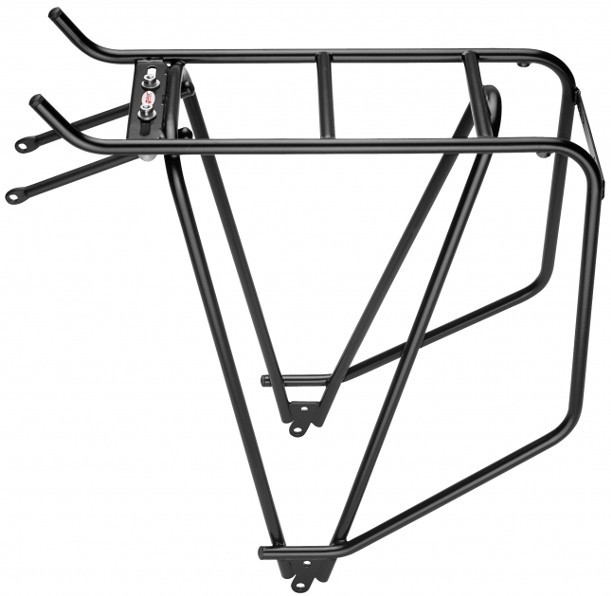
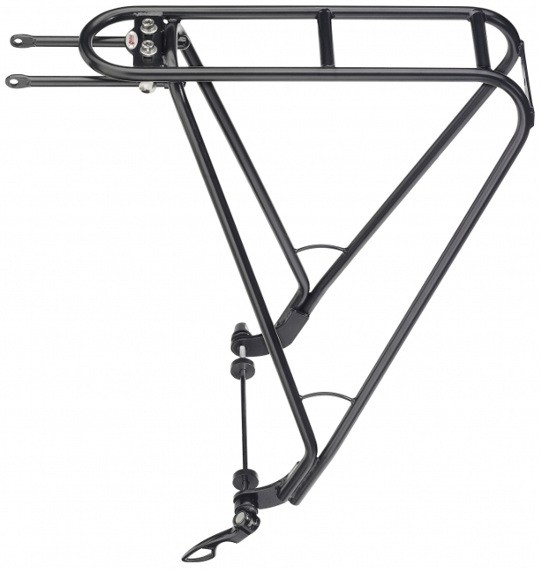
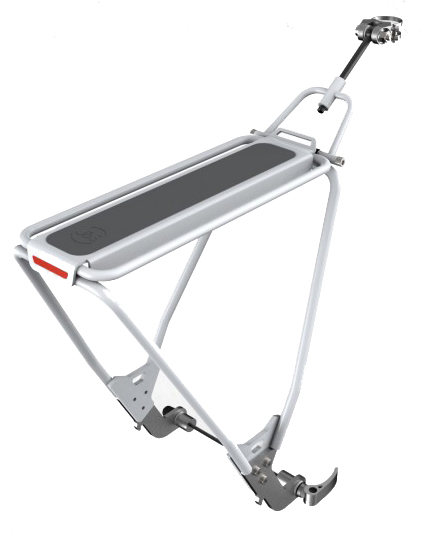
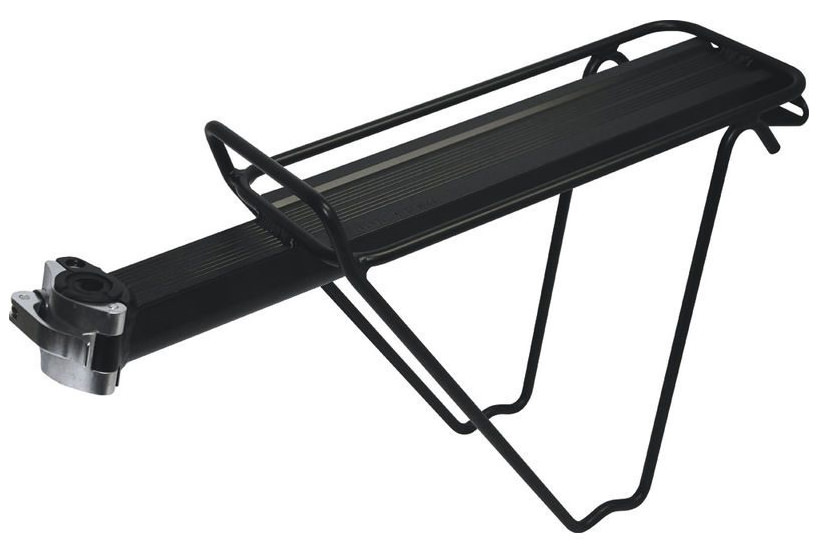
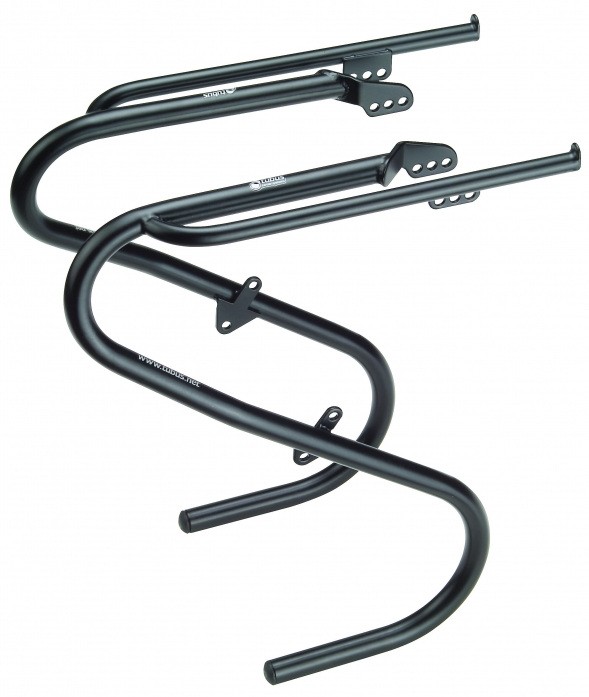

We are also in